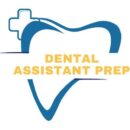DANB requirements for certification include education, exam completion, and adherence to state-specific mandates. To be a Certified Dental Assistant (CDA), you need to pass a series of exams covering various aspects of dental assisting expertise.
Here’s what you need to become DANB certified:
- Eligibility: Graduate from an accredited program or gain requisite work experience.
- Exams: Pass the General Chairside Assisting (GC), Radiation Health and Safety (RHS), and Infection Control (ICE) exams.
- State Regulations: Comply with your state’s unique dental assisting requirements.
Whether you’re just starting out or advancing your career, meeting DANB requirements is a pivotal step in your dental assisting journey.
Introduction to the DANB
The Dental Assisting National Board, Inc. stands as a cornerstone in the dental community, providing a benchmark for excellence and a pathway to professional legitimacy for dental assistants. As you’re considering a career as a dental assistant, or if you’re looking to solidify your role with a certification, understanding the requirements laid out by DANB is critical. This board ensures that certified professionals meet nationally-recognized standards for knowledge and competency.
DANB isn’t just another organization; it’s the credentialing powerhouse for dental assistants across the United States. Its reputation precedes it—think of DANB certification as a seal of excellence in dental assisting. As you delve into this rigorous and rewarding process, you’ll discover that earning a credential from DANB can significantly elevate your career prospects and professional satisfaction.
Why DANB Certification Matters
You might wonder, “Why should I pursue DANB certification?” The answer is multifaceted. First, a DANB certification can open many doors for you in the dental field. It’s widely acknowledged that certified dental assistants earn more, on average, than non-certified counterparts. But it’s not just about the paycheck; it’s about respect in the workplace and validation of your skills and knowledge.
A certified dental assistant is seen as a committed professional who invests in their education and stays abreast of the latest practices and protocols in dental care. Think of it as a bridge to better employment opportunities, as employers often prioritize hiring those with DANB credentials.
Moreover, patients and colleagues alike view DANB-certified assistants as more trustworthy and capable, which can enhance the overall quality of care provided in a dental office. This recognition isn’t just local—it carries across state lines, bolstering your career mobility.
General Eligibility Criteria for DANB Certification
DANB lays out a variety of pathways to certification, a testament to its understanding that excellence can be achieved through multiple avenues. At the most basic level, you’ll find that eligibility criteria can be met via a combination of education, experience, and sometimes, both.
Toward the CDA (Certified Dental Assistant) credential, for instance, you might start by graduating from an accredited program or accumulating on-the-job experience—as much as 3,500 hours. This shows that DANB honors both the traditional academic track and the value of hands-on learning. And if you’re a current or former dental health professional, such as a hygienist, you may find your path to certification even more streamlined.
If you’re curious whether you meet the criteria, consider this: Do you have a high school diploma? Have you completed a dental assisting program or have equivalent work experience? Then you’re likely ready to explore the next steps on your journey to certification.
Detailed Examination Requirements
To don the title of a DANB-certified dental assistant, you must demonstrate knowledge and proficiency across several key areas. The exams you’ll encounter are not just to test you; they serve to solidify your understanding and competence in a variety of domains crucial to your role.
The CDA exam, for example, consists of three components: General Chairside Assisting (GC), Radiation Health and Safety (RHS), and Infection Control (ICE). Each segment examines your mastery of these critical skills under various scenarios, testing not just your memory, but your ability to apply knowledge in practical settings.
Your preparation for these exams will draw from a rich tapestry of experiences, both academic and clinical. It’s essential to tailor your study plan to your background. Where one individual might need a deep dive into radiological health, another might benefit from focusing on infection control protocols. The provided outlines and study materials can serve as your road map, helping you identify the areas where you need to concentrate your effort.
Education and Training Pathways
Variety is the spice of life, and this holds true for your educational journey toward DANB certification. If the thought of sitting in a classroom setting ignites your passion for learning, you’ll find comprehensive programs that follow traditional semester-based structures. Conversely, should you prefer a more dynamic learning environment, explore shorter, intensive programs or even distance learning options that accommodate your schedule and lifestyle.
It’s within these various learning environments that you will absorb the foundational knowledge required by DANB. From chairside protocols to radiographic techniques, your chosen program will guide you through the complex tapestry of skills a dental assistant must master. Some schools offer externships, allowing you to gain invaluable hands-on experience in a real-world dental setting—an opportunity you should seize, as it will serve you not just in your exam preparation, but throughout your career.
Experience and Hands-On Components
The foundation of a competent dental assistant lies in the balance between theoretical knowledge and practical experience. DANB recognizes this balance and often incorporates an experiential requirement into its certification prerequisites. Depending on the certification and your educational pathway, you may need to clock a specific number of hours working chairside in a dental office.
This hands-on aspect is integral to your growth as a dental professional. It’s the arena where you get to apply the lessons from your textbooks to actual patient care. It’s also where you learn the nuances of the profession—how to adapt quickly to different situations or how to communicate effectively with patients and your dental team.
Each procedure, each radiograph, each patient interaction is a building block towards your skillset. To meet the DANB requirements, embrace every chance to learn and practice. Seek environments that challenge you and mentors willing to share their knowledge—these experiences are not only necessary for certification, but they’re goldmines for personal development within your chosen career.
Continuing Education and Renewal
You’ve conquered the textbooks, passed the exams, and now you proudly hold a DANB certification. Congratulations! But your journey doesn’t end there. To maintain your credential, you must commit to continuing education (CE). This isn’t just a bureaucratic hoop to jump through; it’s an opportunity to stay at the forefront of the dental assisting field.
Each year, to renew your DANB certification, you are required to complete a certain number of credits. The idea is to keep you informed on the latest trends, technologies, and techniques in dentistry, ensuring the care you provide is always top-tier. From online courses and webinars to conferences and workshops, the opportunities to learn and grow are abundant.
Renewing your certification also involves maintaining a current CPR certification and, of course, the annual renewal fee. By fulfilling these requirements, you demonstrate your dedication to your profession and your willingness to invest in your career longevity. Stay ahead of the curve by visiting the Renewal page for the most current information on the recertification process.
Application Procedures and Fees
When you’re ready to take a DANB certification exam, familiarizing yourself with the application process is key. Start by downloading the latest application packet from DANB’s website. Pay close attention to the details; each document you submit plays a role in verifying your eligibility.
Regarding fees, know that they are an investment in your future. The costs will vary depending on which exams you’re taking and can be found on the Fees page. Presenting a complete and accurate application will prevent costly delays, so take the time to double-check everything before submitting. Once your application is approved, you’ll receive information on scheduling your exam at a location and time that suits you.
State-Specific Requirements
Remember, dental assisting isn’t a one-size-fits-all career—the danb requirements differ by state, affecting the scope of practice and the necessary qualifications for dental assistants. While DANB certification is nationally recognized, additional state-specific mandates may apply depending on where you work.
These regulations can range from extra exams to specific duties only certified individuals can perform. To get a clear understanding of what’s expected in your state, consult the State-Specific Information and the relevant state dental board. Equipped with this knowledge, you can navigate the certification landscape with confidence, ensuring compliance and excellence in your practice.
Study Resources and Exam Preparation
Diving into the preparation for your DANB exams can seem daunting, but you’re not alone. A wealth of resources is at your fingertips. The DALE Foundation, an affiliate of DANB, offers a variety of study materials and practice tests tailored to the exams. These resources, available at the DALE Foundation’s website, reflect the structure and content of the actual tests—a true insider’s edge for your preparation.
Building a study plan that caters to your strengths and targets your weaknesses is paramount. Whether you learn best in a group setting or on your own, there’s a resource tailored to your study style. And if you’re wondering about the specifics of each exam or how to analyze your practice test results, the online guides and outlines provided will become your study bible, illuminating the path to success.
Overcoming Common Challenges
Throughout your certification journey, you’ll encounter hurdles—maybe it’s a tricky subject area or the balance of studying with working full-time. These challenges are normal, but they’re not insurmountable. Address them head-on by creating a study schedule that fits into your life, reaching out to peers or mentors for support, and practicing self-care to avoid burnout.
If financial obligations are a concern, seek scholarships or employer assistance programs to help cover costs related to the exam and preparation. Additionally, explore the possibility of incremental learning, where you tackle one exam at a time to spread out both the cognitive load and the expense.
Even with thorough preparation, you might not pass on your first attempt—and that’s okay. It’s not a reflection of your capability. Utilize the experience as a learning opportunity and consider it a step closer to achieving your goal. Remember, perseverance is just as vital as the knowledge you carry into the examination room.
Conclusion: Taking the Next Steps Toward DANB Certification
Pursuing DANB certification is no small feat, but the rewards, both personal and professional, are substantial. You now have a roadmap of the danb requirements—from initial application through to continuing education and renewal. The path to certification involves dedication, study, and practice, all toward the goal of enhancing your skill set and solidifying your place in the field of dental assisting.
As you embark on this ambitious journey, you’re not only committing to your personal growth but also to the betterment of patient care within your community. Ready to take that next step? Gather your materials, reach out to your support network, and set your sights on the heights you’ll achieve as a DANB-certified dental assistant. Your future in dentistry starts today.

